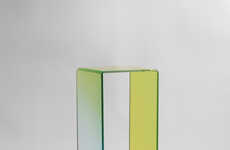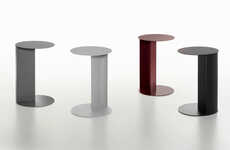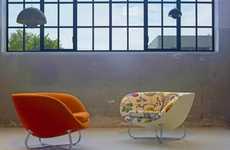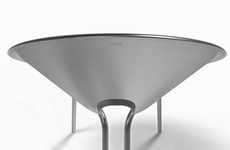
The De-Cubed Table Plays with the Illusion of Plane
Amelia Roblin — October 12, 2012 — Art & Design
References: nowworkshopny & blog.leibal
Part of the appeal of the De-Cubed Table is its engaging reference to the de Stijl movement of the 1920s. It would look quite at home in the Schroder House, placed next to Rietveld's chair.
Its defining feature is its flat geometries with strong linear emphases due to the emptiness in their centers. Four frames compose the side table with three of them oriented vertically and one set down horizontally across their tops for support. The 29-inch-long planes are completely penetrable, except for the top one that surrounds a clear acrylic surface. The overlapping appearance of the poplar boxes provides a unique view from every angle.
Red, yellow, blue and black paint decorate the De-Cubed Table by Now Workshop. It is a modern essay on the building blocks of design.
Its defining feature is its flat geometries with strong linear emphases due to the emptiness in their centers. Four frames compose the side table with three of them oriented vertically and one set down horizontally across their tops for support. The 29-inch-long planes are completely penetrable, except for the top one that surrounds a clear acrylic surface. The overlapping appearance of the poplar boxes provides a unique view from every angle.
Red, yellow, blue and black paint decorate the De-Cubed Table by Now Workshop. It is a modern essay on the building blocks of design.
Trend Themes
1. De Stijl-inspired Furniture - Opportunity for furniture designers to create modern designs inspired by the iconic de Stijl movement.
2. Transparent Furniture - Opportunity for furniture designers to incorporate transparency into their designs, creating unique visual interest.
3. Linear Accent Pieces - Opportunity for furniture designers to create accent pieces with strong linear designs that add unique visual interest to a space.
Industry Implications
1. Furniture Design - Furniture designers can create unique and engaging designs by exploring elements of the de Stijl movement and incorporating transparency and strong linear designs into their pieces.
2. Interior Design - Interior designers can incorporate de Stijl-inspired furniture and other accent pieces with strong linear designs to create visually interesting and unique spaces.
3. Art and Decor - Art and decor companies can create products that incorporate the iconic de Stijl design elements and linear designs, offering unique and modern decor options for customers.
1.1
Score
Popularity
Activity
Freshness
























